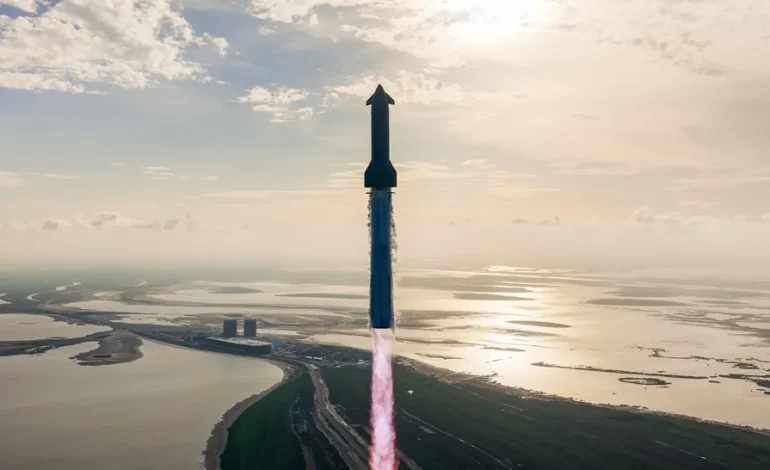After a string of fiery setbacks, SpaceX’s behemoth Starship rocket finally notched some big wins this week — deploying mock Starlink satellites and testing out new heat-shield tech on its way back through Earth’s atmosphere.
The 403-foot-tall rocket blasted off from SpaceX’s Starbase in South Texas Tuesday evening, marking the company’s 10th test flight of the next-gen launch system Elon Musk wants to send to Mars. Three minutes after liftoff, its Super Heavy booster cleanly released the Starship upper stage into space.
Roughly half an hour into flight, Starship’s “Pez dispenser”-style bay popped open and dropped off eight dummy Starlink satellites — the first time SpaceX has actually tried this maneuver with the new rocket. The moment was a key demo for Starship’s future as the workhorse of SpaceX’s satellite empire.
NASA is watching, too. The space agency is betting on Starship to carry astronauts to the moon in 2027 for Artemis III — the first crewed lunar landing since Apollo.
An hour after launch, Starship came screaming back into the atmosphere over the Indian Ocean, reaching hypersonic speeds. Engineers were testing new hexagonal heat-shield tiles designed to withstand brutal reentry without needing constant repairs. That’s a major hurdle if SpaceX wants Starship to be truly reusable.
The vehicle nailed a controlled vertical “landing” on the ocean west of Australia before toppling over and exploding in a fireball — an expected outcome, and one that still counts as progress.
Musk himself has called reentry “maybe the single biggest challenge” for making the rocket fully reusable. On Tuesday, at least, the ship held up long enough to prove its upgrades.
Meanwhile, the 232-foot Super Heavy booster didn’t return to its launch pad “chopsticks” this time. Instead, it splashed down in the Gulf of Mexico after running through alternate landing burns — a move meant to expand its landing options in future missions.
The success gives SpaceX momentum after a tough year. Earlier 2025 flights ended in explosions minutes after liftoff or mid-reentry, and one Starship even blew up on the test stand before launch. But Tuesday’s mission ticked off nearly every milestone: payload deployment, engine reignition in orbit, reentry heat-shield testing, and controlled splashdowns.
Acting NASA Administrator Sean Duffy summed it up:
“Flight 10’s success paves the way for the Starship Human Landing System that will bring American astronauts back to the Moon.”
Of course, there’s still plenty left on the to-do list: perfecting in-space refueling, sticking a safe lunar landing, and proving the rocket can fly crew. But for now, Starship is finally back on track — and SpaceX has data to keep building toward Musk’s dream of Mars.










The latest news in your social feeds
Subscribe to our social media platforms to stay tuned